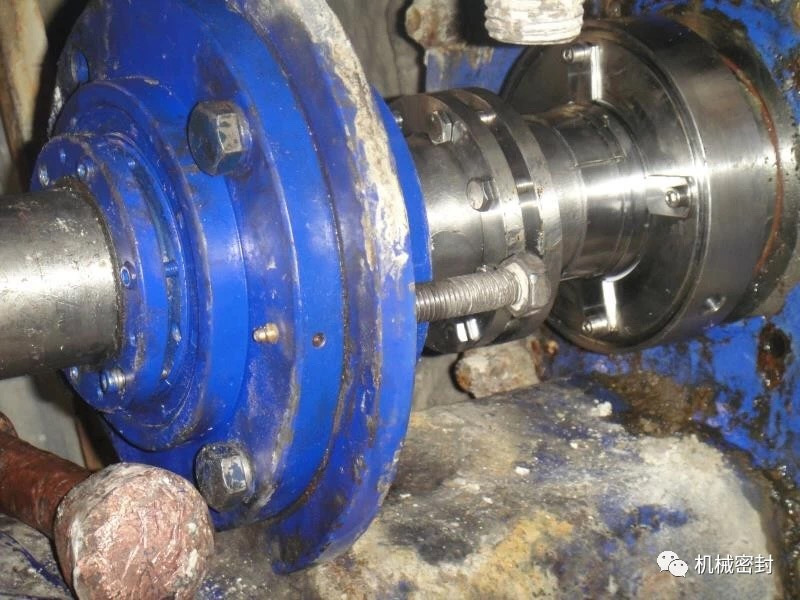With the increase in environmental protection requirements, environmental issues in the chemical industry have become increasingly prominent, and companies have begun to focus on leaking and leaking. Pump sealing is especially important. Sealing plays a crucial role in the stable operation of the entire equipment and equipment and even in the safe and stable operation of production. Especially for chemical companies, the role of sealing is particularly important. In the chemical industry, the majority of the pump’s medium is flammable, explosive, poisonous and hazardous. Once it is leaked and discovered in time, it will cause incalculable losses. Therefore, controlling the leakage of mechanical seals is one of the priorities of chemical plants.
Mechanical seal structure
Mechanical seal, also known as face seal, has a pair of end faces perpendicular to the axis of rotation. This end face under the action of the fluid pressure and compensation of the external elastic force of the machine relies on the cooperation of the auxiliary seal to keep fit with the other end and slide relatively to prevent the medium leakage. The mechanical seal is composed of two parts. One is a stationary ring, and the other part is operated relative to it to achieve the purpose of minimizing the leakage of the seal.
The commonly used mechanical seal structure consists of 1 static ring, 2 moving rings, 3 elastic elements, 4 spring seats, 5 set screws, 6 rotating ring auxiliary sealing rings, 8 static ring auxiliary sealing rings and other components, anti-rotation pin 7 is fixed on the pressure Cap 9 prevents rotation of the stationary ring.
Mechanical seal leakage
There are many types of mechanical seals, but the more common leaks are:
(l) Shaft and shaft seals;
(2) Sealing of moving ring and sleeve;
(3) Sealing between moving ring and static ring;
(4) The seal between the stationary ring and the stationary ring seat;
(5) The seal between the seal cap and the pump body.
Observe, discern, and judge carefully before you can draw correct conclusions.
Leakage Analysis
One, static test leak
Conduct a static test, observe the amount of leakage, and make a preliminary judgment based on the size of the leakage. If there is a problem with the moving ring or the static ring seal ring, then the leakage amount is small; if there is a problem between the dynamic and static ring friction, then the leakage amount is large. Based on this, manual observation of the car, if the amount of leakage does not change, then there is a problem with the seal ring; if it is a problem with moving, static ring friction, the amount of leakage will change significantly; if there is a problem with the dynamic ring seal, then The medium is ejected in the axial direction; if the seal ring of the stationary ring fails, the medium will leak from the water cooling hole or spray around. In addition, different leakage points may exist at the same time, but generally there are points of difference between primary and secondary. As long as observation is meticulous and familiar with the structure, it is entirely possible to judge correctly.
Second, test leaks
Due to the high-speed rotation of the centrifugal force generated by the high-speed rotation of the pump during the test operation, the leakage is suppressed. Therefore, if it leaks during operation, it is necessary to eliminate the reasons for the failure of sealing between the shaft and the end cap, most of which are caused by the damage of the friction pair of the dynamic and static rings. There are several factors that cause the failure of the friction pair seal.
(1) During the operation, various anomalies such as rolling, cavitation, and evacuation occur, causing excessive axial force, separation of the moving and stationary ring contact surfaces, and leakage;
(2) When the mechanical seal is installed, the compression amount is too large, and the frictional end face is seriously damaged, causing leakage;
(3) If the ring seal is installed too loosely or too tightly, the end ring of the ring cannot be sealed, causing leakage;
(4) The hard particles in the medium contain impurities and enter the friction pair so that the moving ring and static ring seal face wear and cause leakage;
(5) Inadequate design selection, most of them need to be disassembled and replaced.
Third, the normal operation of the leak
The sudden leakage of the mechanical seal during operation, normal wear, or reached the end of its service life may be very small. Most of the reasons are due to drastic changes in production conditions or incorrect operation and maintenance.
(1) Various abnormal operations, such as evacuation, cavitation, and other damage caused by sealing;
(2) Dielectric vaporization, if the actual output of the pump is too small, a large amount of medium will circulate in the pump and the heat will accumulate, resulting in seal failure;
(3) If the return flow is too large, stimulating the bottom of the container will damage the seal;
(4) After a long-term outage, it is restarted without a manual reeling, and the adhered friction pair tears the sealing surface;
(5) Increased corrosive and polymeric substances in the medium;
(6) The ambient temperature is not stable;
(7) The production operation is not stable.
During normal operation, the mechanical seal of the centrifugal pump suddenly leaked toxic and hazardous, flammable media. However, the inspectors could not find any abnormality and deal with it in time, which could cause incalculable damages such as fire, pollution, and human injury. It must be taken seriously and taken Effective preventive measures.
Conclusion
In summary, the common leakage locations and leakage causes of chemical pump mechanical seals are summarized. Only by fully understanding the structure of the mechanical seal and some common leaks, and properly analyzing the causes of various leaks, can the right medicines be treated in order to ensure safe production.

